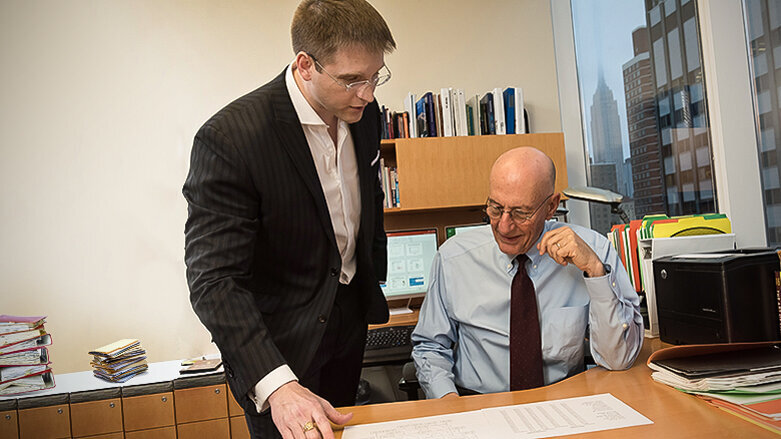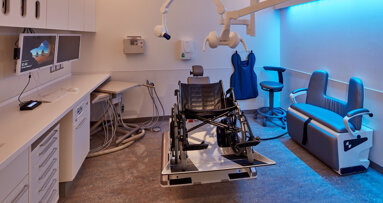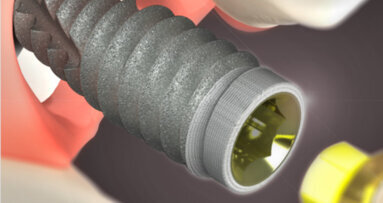NEW YORK, U.S.: The National Institute on Minority Health and Health Disparities, part of the National Institutes of Health (NIH), has awarded a research team at New York University College of Dentistry (NYU Dentistry) funding to study cavity prevention and cost-effectiveness in school-based dental programs in New Hampshire.
The $3.6 million five-year grant will fund a statewide program in six rural New Hampshire counties providing dental care to approximately 12,000 children, from preschool to sixth grade, in over 40 schools. Prof. Richard Niederman and Dr. Ryan Richard Ruff of NYU Dentistry will lead the study comparing the effectiveness of two cavity prevention techniques: a “simple” treatment of topical silver and fluoride, and a “complex” treatment of conventional sealants and fluoride.
Nearly 30 percent of school-age children in the U.S. have untreated cavities. For children in rural areas, this figure is even higher: 35 percent. For rural populations, the primary barrier to care is the distance to be travelled to dentists. Children with cavities and associated toothache face multiple disadvantages, including reduced quality of life, school absences, difficulty paying attention in school and lower standardized test scores. Conventional office-based dental care presents barriers to treatment, including cost, fear of dentists and geographic isolation.
“Bringing care to children instead of children to care eliminates these barriers,” said Niederman, Chairperson of the Department of Epidemiology and Health Promotion.
Through prior work in New Hampshire, New York, Massachusetts, Maine and Colorado, NYU Dentistry researchers determined that complex school-based cavity prevention programs are effective in reducing cavities by two-thirds. Preliminary results suggest that simple prevention may be equally effective and is preferred by patients.
The researchers expect that both treatments will be similarly effective in reducing untreated cavities. However, for the same cost and in the same amount of time, nearly four times more children can be treated with the simpler prevention. Therefore, if the simpler, less expensive strategy is found to be as effective as the more complex, more expensive method, the findings could support clinical and policy changes.
“In the short term, this trial will improve the health of New Hampshire children. In the long term, our findings can inform New Hampshire and U.S. policy planning to reduce oral health disparities through the creation of a cost effective, evidenced-based, and school-based cavity prevention model,” said Ruff.
In the NIH-funded study, the New Hampshire schools will be selected at random to receive either treatment with silver diamine fluoride and fluoride varnish or with sealants and fluoride varnish. The first method takes 6 minutes to deliver, compared with 20 minutes for the second method. All children will receive the same preventive dental care twice a year. The researchers will assess oral health to compare the outcomes of both treatments.
Tags:
NEW YORK, U.S.: The effects of dementia on a person’s oral health can be severe, with research showing that even individuals with mild dementia are at ...
NEW YORK, U.S.: Within dentistry, offering tailored oral healthcare to individuals with physical, cognitive and developmental disabilities is an ongoing ...
NEW YORK, U.S.: Affordable health care is a major issue in many parts of the world. Since 2000, the New York University College of Dentistry (NYU Dentistry)...
LONDON, England: The UK College of General Dentistry has released the third edition of Standards in Dentistry, a comprehensive and freely accessible online ...
NEW YORK, U.S.: BioHorizons Implant System, a leading global provider of dental implant and tissue regeneration products, has donated funding and in-kind ...
ALEXANDRIA, Va., U.S.: This year, the Journal of Dental Research (JDR) is celebrating its publishing centenary. To mark the milestone, the journal has been ...
LOS ANGELES, U.S.: Since current head and neck cancer staging systems include lymph node size and laterality, but focus less on the total number of positive...
NEW YORK, U.S.: The question of whether antibiotics positively influence the survival of dental implants in overall healthy patients is still highly ...
SEATTLE, US: Murine models have been instrumental in studying tooth development; however, significant differences in tooth shape, number of cusps, and the ...
NEW YORK, U.S.: In 2019, the Centers for Disease Control and Prevention (CDC) released a statement declaring that Candida auris is an emerging fungus that ...
Live webinar
Mon. 12 January 2026
9:00 am EST (New York)
Prof. Judith Jones D.D.S; M.P.H., Prof. Kakuhiro Fukai D.D.S., Ph.D, Dr. Bathsheba (Bethy) Turton
Live webinar
Wed. 14 January 2026
12:00 pm EST (New York)
Dr. Théo Laplane, Dr. Robert Gottlander DDS
Live webinar
Fri. 16 January 2026
12:00 pm EST (New York)
Live webinar
Mon. 19 January 2026
1:00 pm EST (New York)
Philipp Kopp, Michael Seeber
Live webinar
Thu. 22 January 2026
2:00 pm EST (New York)
Dr. Nicola M. Grande DDS, PhD
Live webinar
Wed. 28 January 2026
8:00 am EST (New York)
Live webinar
Wed. 28 January 2026
11:00 am EST (New York)
Prof. Dr. Jan-Frederik Güth



 Austria / Österreich
Austria / Österreich
 Bosnia and Herzegovina / Босна и Херцеговина
Bosnia and Herzegovina / Босна и Херцеговина
 Bulgaria / България
Bulgaria / България
 Croatia / Hrvatska
Croatia / Hrvatska
 Czech Republic & Slovakia / Česká republika & Slovensko
Czech Republic & Slovakia / Česká republika & Slovensko
 France / France
France / France
 Germany / Deutschland
Germany / Deutschland
 Greece / ΕΛΛΑΔΑ
Greece / ΕΛΛΑΔΑ
 Hungary / Hungary
Hungary / Hungary
 Italy / Italia
Italy / Italia
 Netherlands / Nederland
Netherlands / Nederland
 Nordic / Nordic
Nordic / Nordic
 Poland / Polska
Poland / Polska
 Portugal / Portugal
Portugal / Portugal
 Romania & Moldova / România & Moldova
Romania & Moldova / România & Moldova
 Slovenia / Slovenija
Slovenia / Slovenija
 Serbia & Montenegro / Србија и Црна Гора
Serbia & Montenegro / Србија и Црна Гора
 Spain / España
Spain / España
 Switzerland / Schweiz
Switzerland / Schweiz
 Turkey / Türkiye
Turkey / Türkiye
 UK & Ireland / UK & Ireland
UK & Ireland / UK & Ireland
 Brazil / Brasil
Brazil / Brasil
 Canada / Canada
Canada / Canada
 Latin America / Latinoamérica
Latin America / Latinoamérica
 USA / USA
USA / USA
 China / 中国
China / 中国
 India / भारत गणराज्य
India / भारत गणराज्य
 Pakistan / Pākistān
Pakistan / Pākistān
 Vietnam / Việt Nam
Vietnam / Việt Nam
 ASEAN / ASEAN
ASEAN / ASEAN
 Israel / מְדִינַת יִשְׂרָאֵל
Israel / מְדִינַת יִשְׂרָאֵל
 Algeria, Morocco & Tunisia / الجزائر والمغرب وتونس
Algeria, Morocco & Tunisia / الجزائر والمغرب وتونس
 Middle East / Middle East
Middle East / Middle East















































To post a reply please login or register